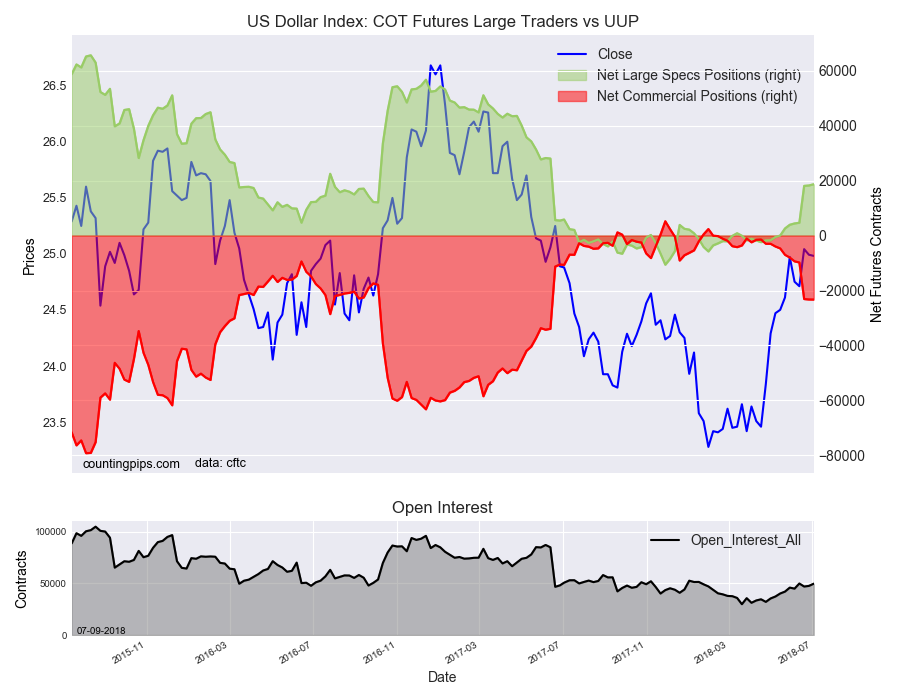
Last week’s data showed 5 out of 8 major currency levels are bearish
The latest data for the weekly Commitment of Traders (COT) report, released by the Commodity Futures Trading Commission (CFTC) on Monday due to the 4th of July holiday, showed that large traders and currency speculators raised their bets again for the US dollar index this week while sharply betting against the Canadian dollar and the New Zealand dollar.
Non-commercial large futures traders, including hedge funds and large speculators, bet in favor of the US dollar index (446 weekly change in contracts), the euro (2,843 contracts), Australian dollar (1,748 contracts) and the Mexican peso (18,425 contracts), according to the data reported through Tuesday July 3rd.
On the flip side, the currencies whose speculative bets declined last week were the British pound sterling (-7,200 contracts), Japanese yen (-4,509 contracts), Swiss franc (-2,463 contracts), Canadian dollar (-16,649 contracts) and the New Zealand dollar (-8,842 contracts).
Speculators continued to raise bets for the US dollar index last week as the spec position has now improved for eleven straight weeks to the highest bullish level since June 13th 2017 when the net positions totaled 28,025 contracts.
Elsewhere, we saw had substantial changes (+ or – 10,000 contracts) in the individual currency contract levels for the speculators category.
- Canadian dollar contracts decreased by at least -16,000 contracts for a second straight week as the current position is in its 15th straight week of bearish spec positioning. The current Loonie speculator sentiment is now at the most bearish level since June 27th of 2017 when the net position totaled -49,495 contracts.
- Mexican peso positions jumped by over +18,000 contracts last week after seeing declines in ten out of the previous eleven weeks heading up to recent election. The latest gains in spec positions brings the overall standing back into a small bullish level after a fall into bearish territory for the previous four weeks.
Other Notables:
- Euro positions saw a small rebound in the latest data after bets had dropped for ten consecutive weeks
- British pound bets fell for the third straight week and are now in bearish territory for a third straight week. The current bearish level is the highest since September 2017
- Japanese yen and Swiss franc positions each had rising bearish positions last week. The yen is at the most bearish since March 13th while the franc is at the most bearish standing since the end of May
- Australian dollar bets have improved for two straight weeks although the Aussie has been in bearish territory now for fourteen consecutive weeks
- New Zealand dollar bearish bets increased for the third straight week pushing the net position further into bearish territory. The current level is at the most bearish we can find in our records dating back to 1999
Table of Weekly Commercial Traders and Speculators Levels & Changes:
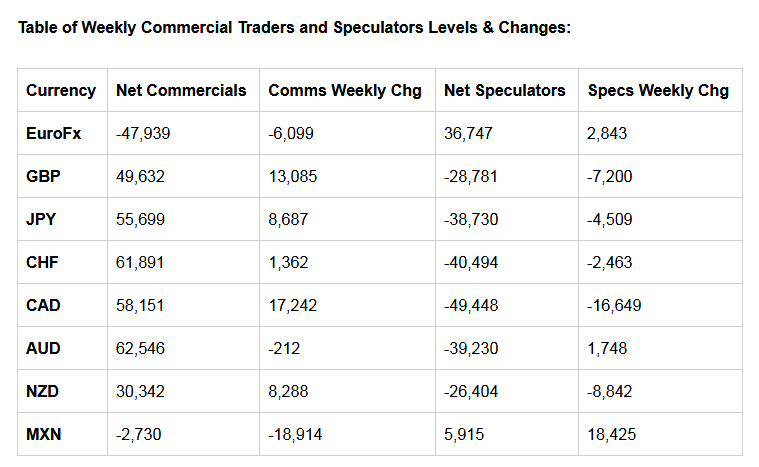
Weekly Charts: Large Trader Weekly Positions vs Price
EuroFX:

British Pound Sterling:
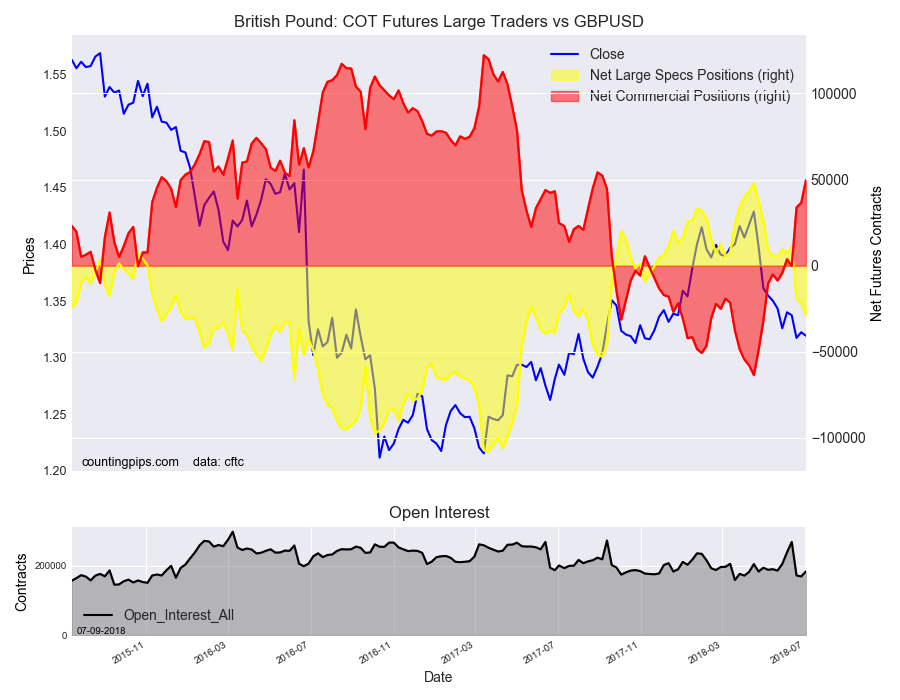
Japanese Yen:

Swiss Franc:
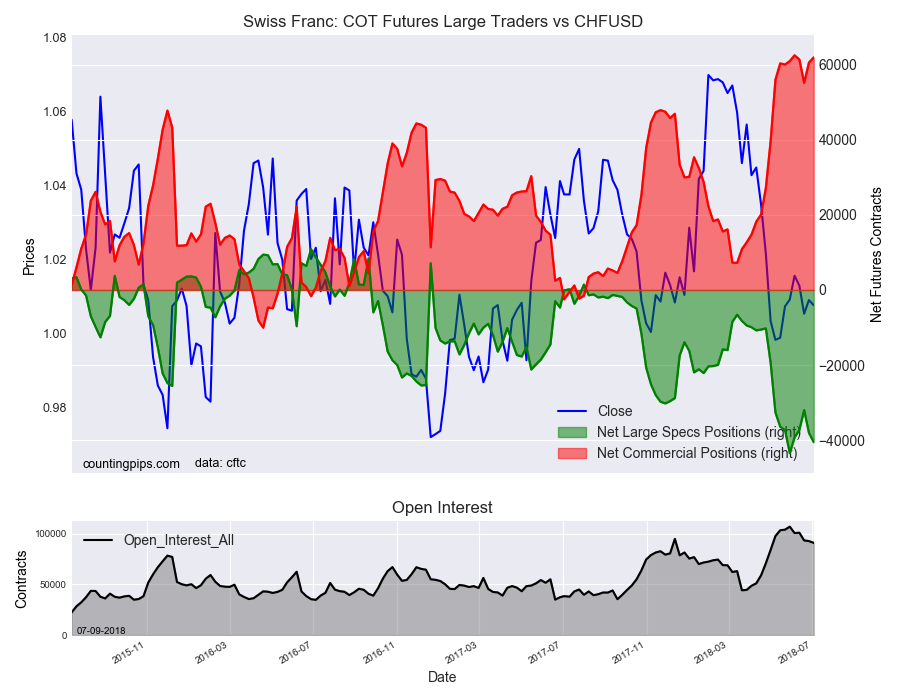
Canadian Dollar:
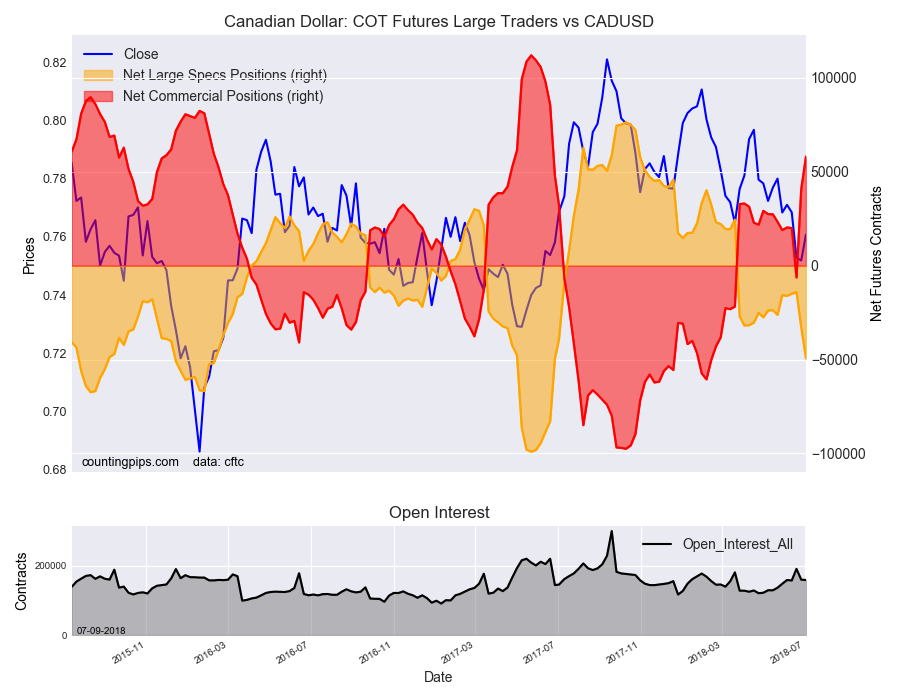
Australian Dollar:
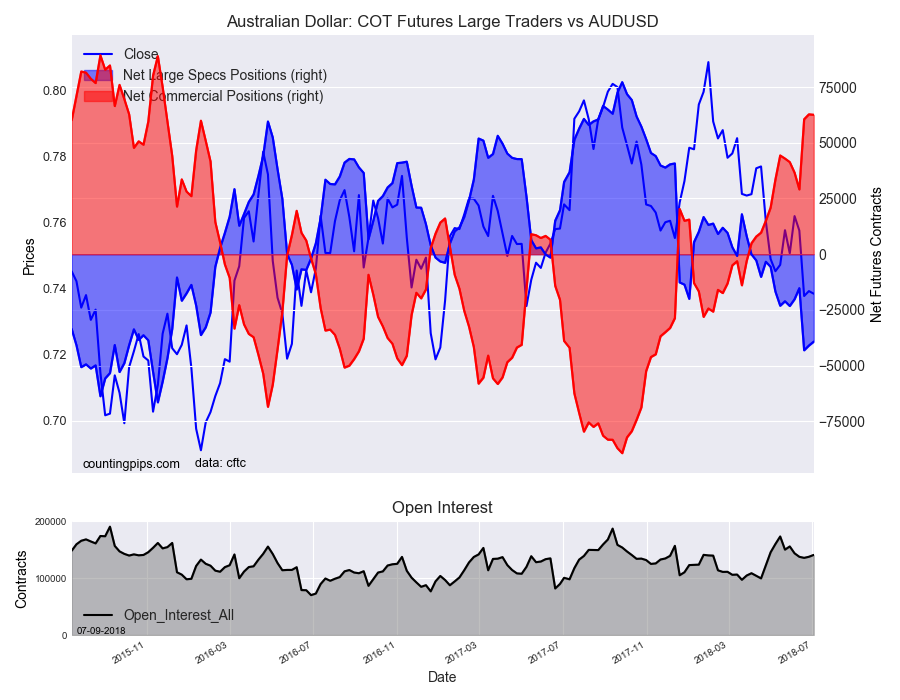
New Zealand Dollar:
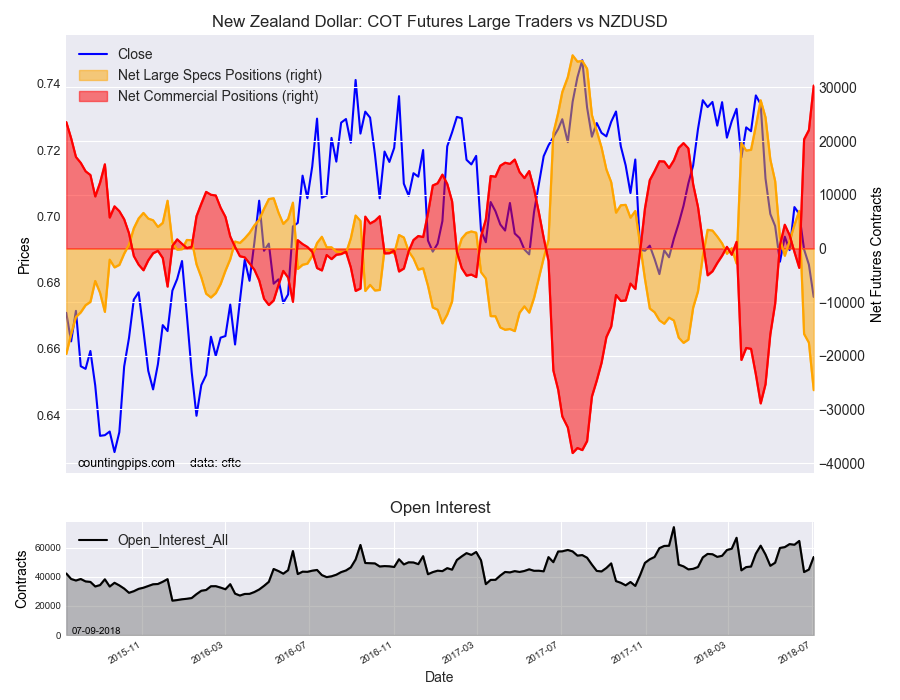
Mexican Peso:
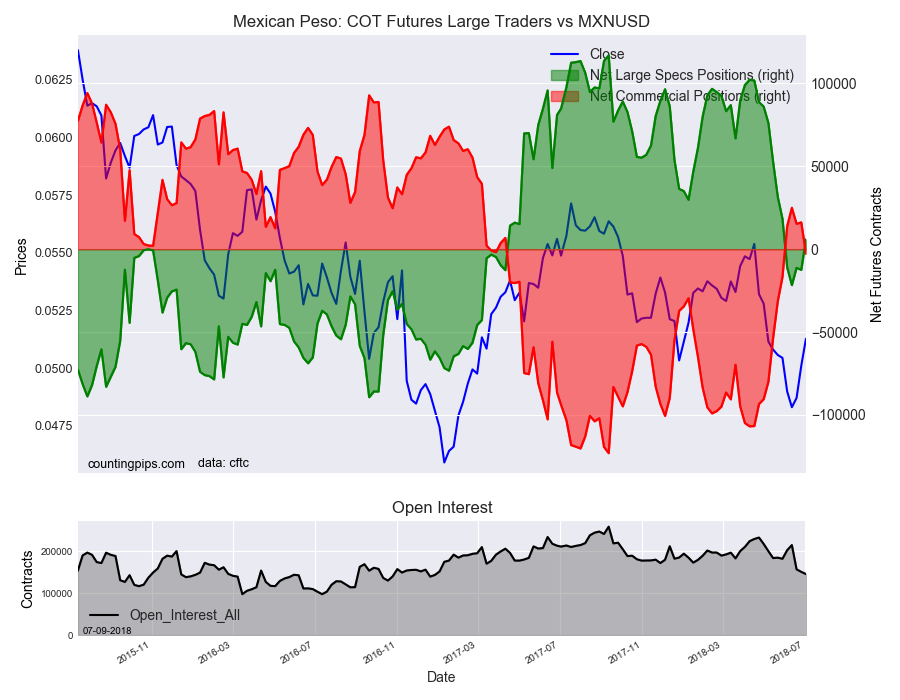
*COT Report: The weekly commitment of traders report summarizes the total trader positions for open contracts in the futures trading markets. The CFTC categorizes trader positions according to commercial hedgers (traders who use futures contracts for hedging as part of the business), non-commercials (large traders who speculate to realize trading profits) and nonreportable traders (usually small traders/speculators). Find CFTC criteria here: (http://www.cftc.gov/MarketReports/CommitmentsofTraders/ExplanatoryNotes/index.htm).
The Commitment of Traders report is published every Friday by the Commodity Futures Trading Commission (CFTC) and shows futures positions data that was reported as of the previous Tuesday (3 days behind).
Each currency contract is a quote for that currency directly against the U.S. dollar, a net short amount of contracts means that more speculators are betting that currency to fall against the dollar and a net long position expect that currency to rise versus the dollar.
(The charts overlay the forex closing price of each Tuesday when COT trader positions are reported for each corresponding spot currency pair.) See more information and explanation on the weekly COT report from the CFTC website.
